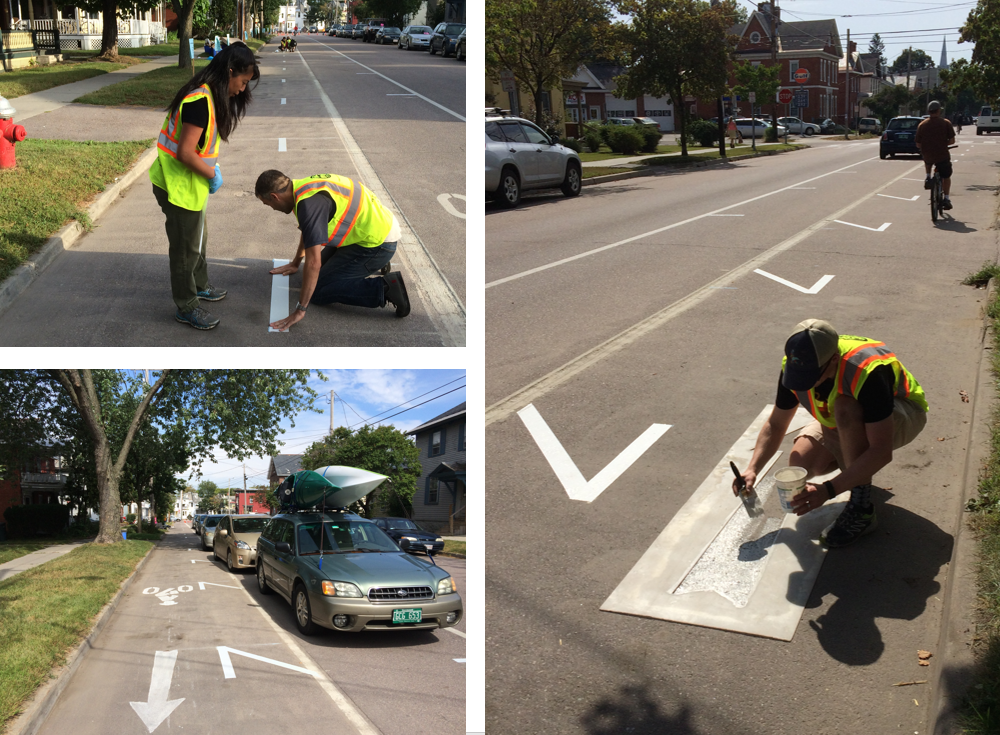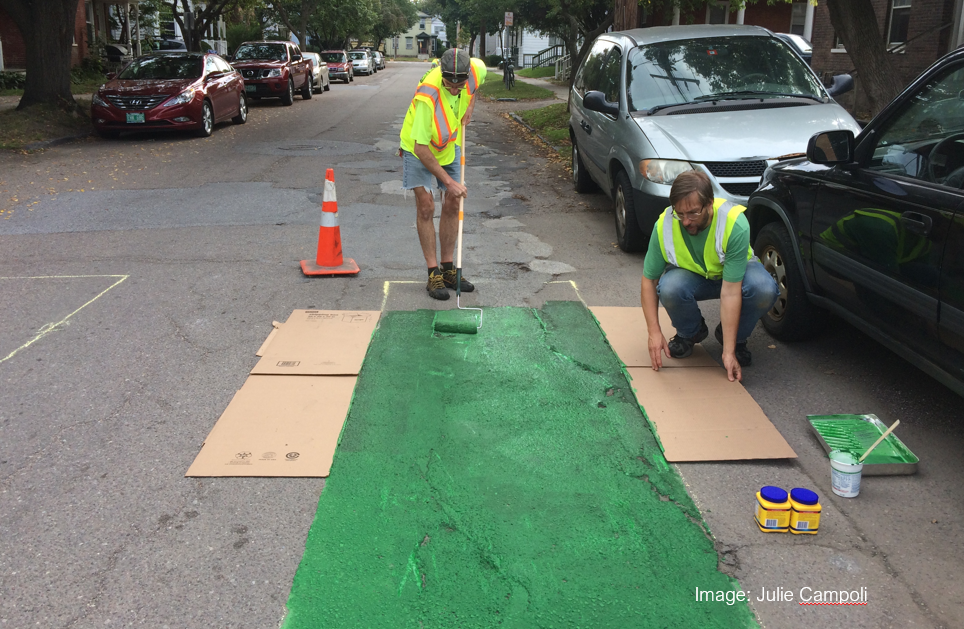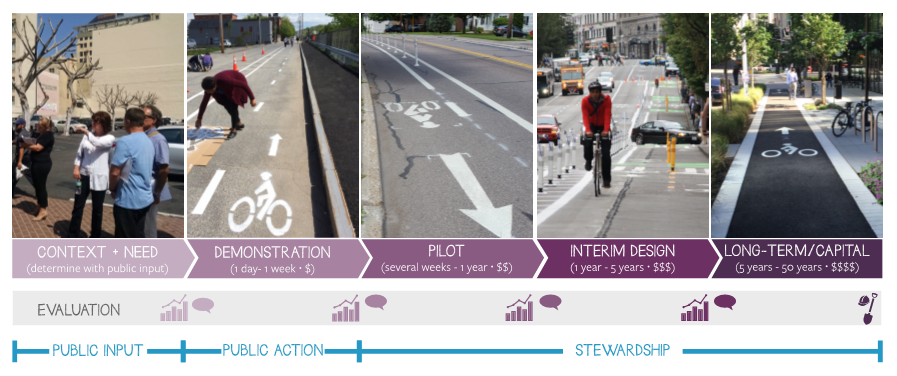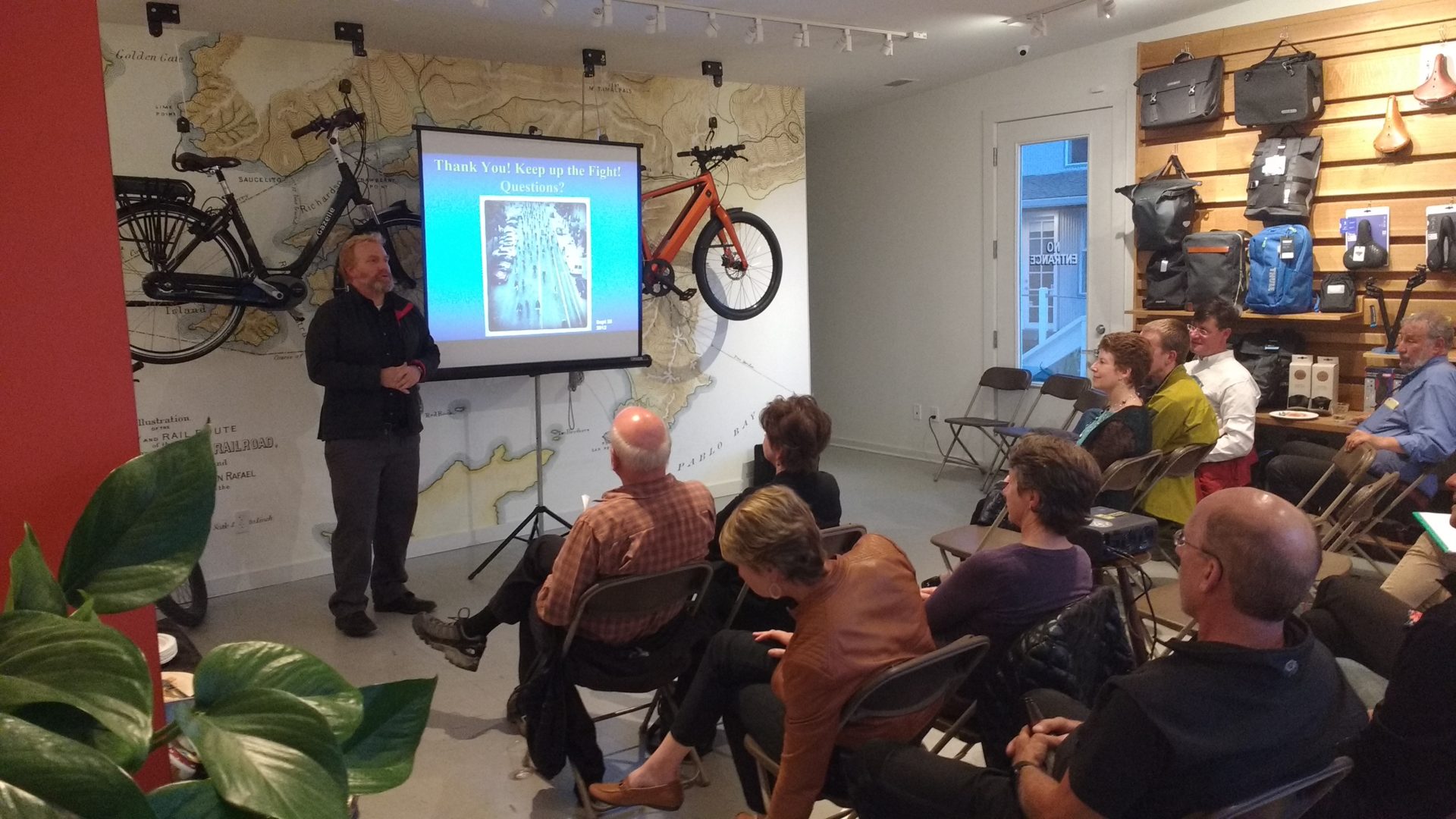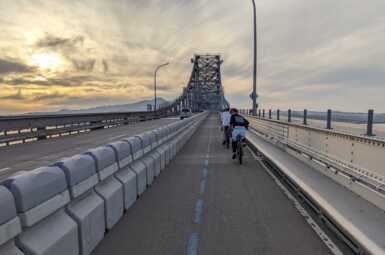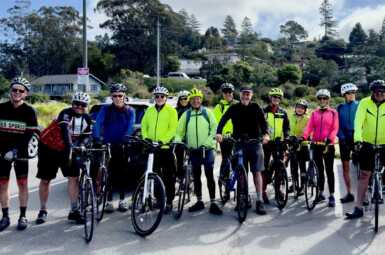MCBC Speaker Series Recap Trial Bike Projects Help Overcome Fear of Change – Part I
Our second MCBC Speaker Series evening provided an eye-opening look at a new approach to public engagement that could play an integral role in overcoming resistance to bike improvements in the county, with a dynamic and inspiring presentation to a full crowd of elected officials, city staff members, and MCBC supporters last Tuesday.
In “Getting to Yes: Overcoming NIMBYism En Route to Safer Streets,” keynote speaker Julie Flynn of The Street Plans Collaborative detailed her work implementing short-term, low-cost street projects aimed at giving the public an opportunity to experience improvements before they are finalized and made permanent.
A temporary parking-protected bike lane in Burlington, VT. Image: Julie Flynn, The Street Plans Collaborative.
Here in Marin, efforts to improve safety for people on bikes are often met with vocal resistance due to fears about parking or traffic impacts. Whether those fears are grounded in data and evidence or not, they are often enough to delay, weaken, or completely eliminate needed safety improvements.
Thankfully, a new approach advanced by Flynn’s team – known in urban planning circles as “tactical urbanism” – is upending the traditional planning and public engagement process. It boosts public involvement, allows people to reimagine streets, and gives cities the opportunity to use trial and error before committing to lasting changes.
How it Works
Temporary paint for a neighborhood greenway – just add corn starch! Image: Julie Campoli via Julie Flynn, The Street Plans Collaborative.
In Flynn’s case study of Burlington, VT, a series of temporary bikeways were planned over a three-week period and installed quickly and cheaply using $4000 worth of temporary materials. The bikeways each demonstrated a different type of improvement, allowing people to physically experience and provide feedback on alternatives under consideration in the City’s bike plan. The City made some of the easier improvements (such as intersection markings) permanent immediately following the trial. To learn more about Burlington’s case study, see The Street Plans Collaborative’s project page.
It’s key to note that trial projects can vary in scale, cost, and permanence. Flynn shared a model for project delivery (see below) that includes ‘demonstration’ projects of up to one week, lengthier ‘pilot’ projects, one-plus year ‘interim’ projects, and five-plus year ‘long-term/capital’ projects. Each stage provides an opportunity to solicit feedback and make adjustments before moving on to more costly and permanent changes.
Flynn offered a new model for project delivery that includes a number of opportunities to solicit feedback, collect data, and tweak designs before making the fixes permanent. Image: Julie Flynn, The Street Plans Collaborative.
Why it Works
Demonstration projects allow cities to solicit feedback prior to making substantial political and/or financial investments. Perhaps more importantly, they bring bring the planning process directly to roadway users, rather than relying solely on feedback gathered at public meetings. Image: Julie Flynn, The Street Plans Collaborative.
Flynn offered a number of benefits of tactical urbanism (bolded below, with additional commentary from MCBC):
- Allow people to physically experience alternative options and re-imagine how streets and public spaces could be used.
- Encourage people to work together in new ways, strengthening relationships between residents, local organizations, and government agencies. This is key for local government agencies, which are accustomed to working within the confines of rigid public meetings that can be inaccessible and unappealing to the general public.
- Widen public engagement; take ideas from paper to pavement, and gather data from the real-world use of streets and other public spaces. Cities typically rely upon traffic and parking studies to justify their plans; project opponents are often wary of these studies, opting instead for their own predictions. Pilot projects help take the guesswork out of the public engagement process.
- Test aspects of a program, project or plan before making large political/financial investments. Once street projects are implemented, they often remain untouched for a decade or more. Why shouldn’t we test improvements before making such long-lasting improvements?
- Expedite implementation and deliver public benefits faster.
Stay Tuned…
This is the first of a two-part series about our second MCBC Speaker Series event. Part two will include takeaways from longtime County Supervisor Steve Kinsey, who is now working as a consultant on a number of transportation planning efforts in San Rafael, as well as next steps from MCBC.
Thanks to Our Speaker Series Sponsors!
Mike’s Bikes | The New Wheel | Studio Velo | Marin Museum of Bicycling | Mini of Marin
